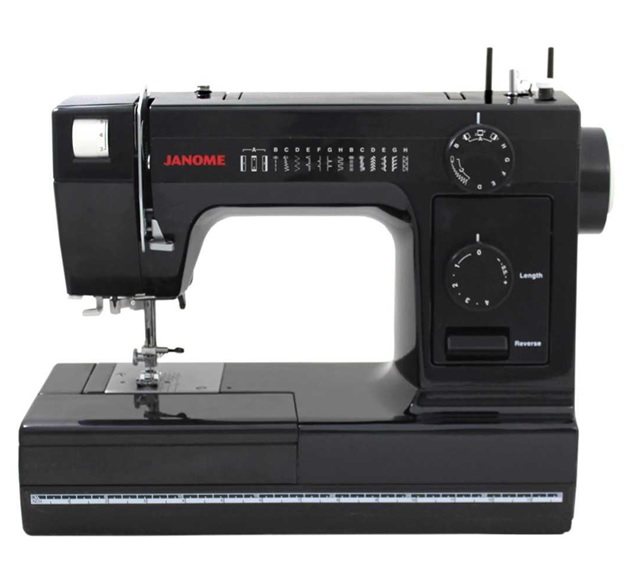How to Find and Install a Sewing Machine Into Your Cabinet
19th Sep 2024
Investing in a high-quality sewing cabinet is a game-changer for any avid sewist, providing a dedicated workspace that promotes organization, comfort, and efficiency. However, the key to maximizing the benefits of your sewing cabinet lies in selecting the right sewing machine to seamlessly integrate into your setup. With so many options on our site, it can be overwhelming to navigate the choices. Fear not! We've put together a comprehensive guide to help you pick the perfect sewing machine for your cabinet.

Find the Best Sewing Machine For Your Cabinet
Determine your sewing needs
Before diving into machine options, take a step back and assess your sewing goals and the types of projects you'll be tackling. Are you primarily focused on garment sewing, quilting, embroidery, or a combination of various techniques? Understanding your sewing needs will help you narrow down the features and capabilities you require in a machine.
Consider the cabinet dimensions
Measure the designated space within your sewing cabinet where the machine will be installed. Note the height, width, and depth to ensure the sewing machine you choose will fit comfortably. Additionally, factor in any clearance needed for the presser foot and arm when raised or extended.
Evaluate machine weight and stability
Sewing cabinets are designed to support the weight of a sewing machine, but it's essential to consider the machine's heft. Heavier machines may require additional support or reinforcement within the cabinet to prevent wobbling or instability during use.
Prioritize built-in features
Many modern sewing machines come equipped with a plethora of advanced features, such as automatic needle threaders, built-in stitches, and computerized controls. Determine which features are essential for your sewing needs and prioritize them when selecting a machine for your cabinet setup.
Think about future upgrades
While your current sewing needs may be straightforward, consider the possibility of expanding your skills or taking on more complex projects in the future. Choosing a machine with room for upgrades, such as the ability to add embroidery units or specialized presser feet, can future-proof your investment.
Evaluate ease of use and maintenance
Sewing machines integrated into cabinets should be user-friendly and easily accessible for maintenance. Look for machines with top-loading bobbin systems, clear paths for threading, and convenient access points for cleaning and oiling.
Consider brand reputation and support
Invest in a sewing machine from a reputable brand known for quality construction and reliable customer support. This will ensure you have access to spare parts, updates, and expert assistance should you need it down the line.
By carefully considering your sewing needs, cabinet dimensions, machine features, and long-term goals, you'll be able to select the perfect sewing machine to complement your cabinet setup. Check out our vast collection here to see trusted brands, top models, and exciting features here!
How to Install a Sewing Machine In Your Cabinet
Avid sewists, having a dedicated sewing cabinet can transform your workspace, providing convenience, organization, and an ergonomic setup. However, properly installing your sewing machine into the cabinet is crucial to ensure a smooth and efficient sewing experience. Follow these step-by-step instructions to seamlessly integrate your sewing machine into its new home.
Choose the Right Cabinet
Start by selecting a sewing cabinet specifically designed to accommodate your sewing machine model. Measure the dimensions of your machine carefully, including the height when the presser foot is raised, to ensure a perfect fit within the cabinet's designated space.
Prepare the Cabinet
Before installation, clear the cabinet's interior and thoroughly clean the surface where the sewing machine will rest. This will prevent any debris or dust from interfering with the machine's operation.
Install the Insert Plate
Most sewing cabinets come with an insert plate or a recessed area designed to fit the sewing machine's base. If your cabinet has an insert plate, carefully position it according to the manufacturer's instructions, ensuring a flush fit with the surrounding surface.
Level the Machine
Once the insert plate is in place, lower your sewing machine into the designated area. Adjust the machine's height using the cabinet's built-in leveling tools or shims until the machine bed is perfectly level with the surrounding surface. This step is crucial for smooth fabric feeding and even stitching.
Secure the Machine
Many sewing cabinets feature mounting hardware or clips to securely fasten the sewing machine in place. Follow the cabinet's instructions to properly secure your machine, preventing any unwanted movement or vibration during use.
Connect and Test
With the sewing machine securely installed, connect it to the power source and any necessary cables or pedals. Test the machine's operation by running it through its various functions, ensuring everything works smoothly within the cabinet setup.
Organize Accessories
Take advantage of the cabinet's storage compartments and drawers to organize your sewing accessories, such as presser feet, bobbins, and thread spools. Keeping everything within reach will streamline your sewing workflow.
Adjust Lighting and Comfort
If your sewing cabinet includes built-in lighting, adjust it to illuminate your workspace evenly and reduce eye strain. Additionally, ensure the cabinet's height and positioning allow for comfortable seating and an ergonomic sewing posture.
By following these steps, you'll create a seamless integration between your sewing machine and its cabinet, transforming your workspace into a functional and efficient sewing haven. Remember to consult your cabinet's manual for any specific instructions and safety guidelines, and enjoy the convenience of having your sewing machine readily accessible and optimally positioned for all your creative projects.



